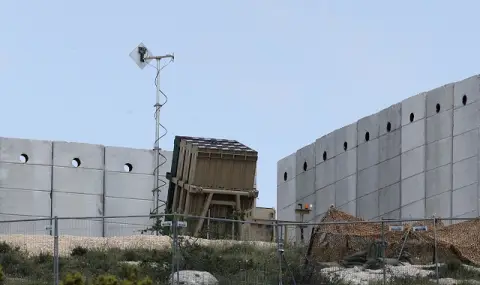Israel is bracing for possible retaliation from Iran after the assassination of Tehran's close ally, Hamas leader Ismail Haniyeh, in the Iranian capital last week.
Iran's air force has 37,000 troops, but decades of international sanctions have largely deprived the country of the latest high-tech military equipment, according to the International Institute for Strategic Studies in London (IISS), cited by "Reuters".
The Iranian Air Force has only a few dozen operational strike aircraft, including Russian jets and outdated American models acquired before the 1979 Iranian Revolution.
Tehran has a squadron of nine F-4 and F-5 fighter jets, one squadron of Russian Sukhoi-24 jets and some MiG-29, F7 and F14 jets, the IISS said.
The Iranians also have unmanned aircraft (drones) designed to hit targets and blow themselves up. Analysts estimate its drone arsenal at several thousand. In addition, they say, Iran has more than 3,500 surface-to-surface missiles, some of which carry half-ton warheads. However, the number capable of reaching Israel may be smaller.
The commander of Iran's air force said in April that the Sukhoi-24 jets were in the "best state of readiness" to counter any potential Israeli attack.
But Iran's reliance on aircraft first developed in the 1960s shows the relative weakness of its air force.
For defense, Iran relies on a combination of Russian and domestically produced surface-to-air missiles and air defense systems.
Tehran took delivery of the S-300 air defense system from Russia in 2016. It is a long-range surface-to-air missile system capable of hitting multiple targets simultaneously, including aircraft and ballistic missiles.
Iran also has the domestically produced Bavar-373 surface-to-air missile platform, as well as the Sayyad and Raad defense systems.
Israel has a high-tech US-supplied air force with hundreds of F-15, F-16 and F-35 multirole fighter jets. They played a role in the downing of Iranian drones in April, when Iran unleashed a massive drone and missile attack on Israel in its first direct attack on Israeli territory.
The Air Force has no long-range bombers, although a smaller fleet of converted Boeing 707s serve as refueling tankers that could allow its fighters to reach Iran for precision flights.
The Israeli Air Force demonstrated its ability to strike long-range targets in July when its fighter jets struck targets near the Yemeni port of Hodeidah in retaliation for a Houthi drone attack on Tel Aviv.
A pioneer in drone technology, Israel has Heron drones capable of flying for more than 30 hours, enough for long-range operations. The Delilah munitions have an approximate range of 250 km and cannot reach the Persian Gulf unless fired near the border with Iran.
Israel is believed to have developed long-range surface-to-surface missiles, but has neither confirmed nor denied this.
The multi-layered air defense system developed with US help after the 1991 Gulf War gives Israel several additional options to shoot down Iranian drones and long-range missiles.
The most high-tech is the "Strela-3" system, which intercepts ballistic missiles in space. An earlier model, Strela-2, operated at lower altitudes. "David's Slingshot" medium range counters ballistic missiles and cruise missiles, while the "Iron Dome" short range deals with the types of rockets and mortar shells used by Iran-backed militias in Gaza and Lebanon.
